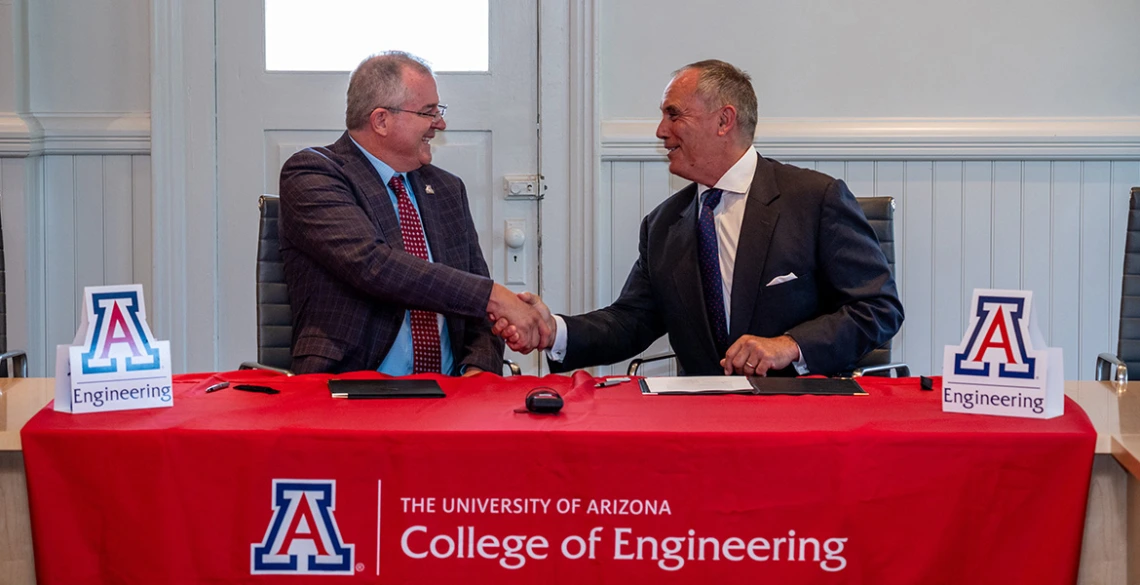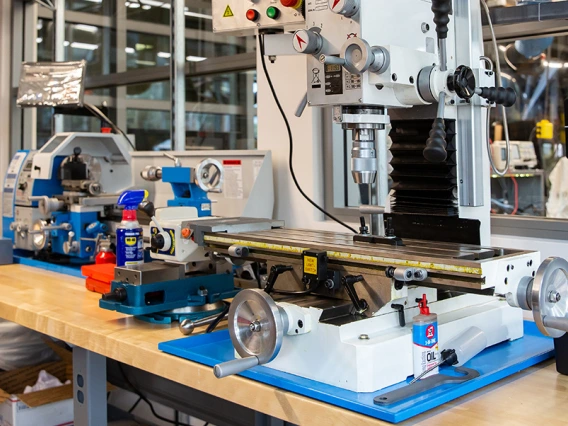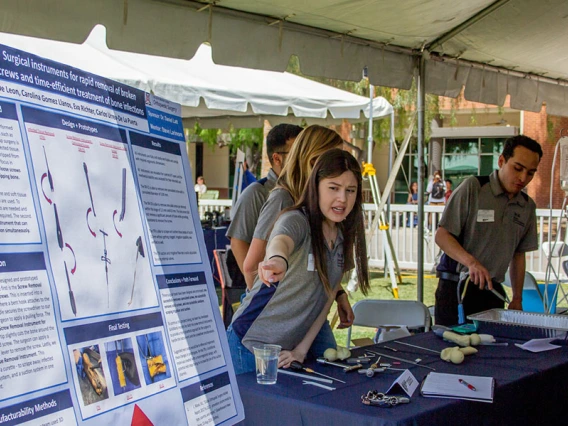UA Engineering Establishes Partnership for Institute for Near Space Studies
The Missile Defense Advocacy Alliance collaboration aims to advance research, education and STEM outreach.

Craig M. Berge Dean David W. Hahn and Riki Ellison, founder of the Missile Defense Advocacy Alliance, sign the memorandum of understanding on Thursday, Oct. 19.
David W. Hahn, the College of Engineering’s Craig M. Berge Dean, and Riki Ellison, founder of the Missile Defense Advocacy Alliance, signed a memorandum of understanding on Oct. 19 to establish the Institute for Near Space Studies on behalf of the University of Arizona and MDAA.
Since 2002, MDAA has focused on the development and deployment of missile defense for homeland security. Ellison, who attended Amphitheater High School in Tucson, also started the Youth Impact Program in 2006 to provide a free STEM curriculum for inner-city kids.
The institute is expected to bolster the university’s near-space and hypersonic research as well as related academic programs and STEM outreach.
“This is highly in line with our land grant mission, the expansion of the College of Engineering, and what we offer,” said Hahn. “We really want to focus on schools where the students have historically been underrepresented in STEM. I’m predicting next summer, in the Arizona stadium, we’re going to launch balloons with the Youth Impact kids.”
Ellison is excited to expand MDAA’s youth programs at the university and help introduce Tucson’s middle-schoolers to engineering.
“Youth Impact Program, which will be held here at the University of Arizona, is a social change program,” said Ellison, whose background is grounded in service and athletics.
Ellison earned a bachelor’s degree in International Relations and a graduate certificate in Defense and Strategic Studies while playing football at the University of Southern California. He was the first New Zealander and Māori drafted into the NFL and has three Super Bowl championship rings, playing for the San Francisco 49ers and Oakland Raiders for 10 years as a middle linebacker.
Balloons Make a Comeback
Near space is at altitudes of 60,000 to 300,000 feet from the Earth’s surface, the lower third of which is accessible by scientific helium balloons. High-altitude balloons are a cost-effective starting point for near-space research. Sensing technology on balloons can assist in climate change data and meteorology as well as warn of incoming hypersonic missiles traveling at five times the speed of sound and faster.
The recent event involving China’s surveillance balloon flying over the United States was a reminder of this country’s “gaps” in near-space technology, Hahn and Ellis echoed.
“This university with this program can lead not only our nation, but the world in this specific area of airspace research and study to make our nation safer and our world safer,” Ellison said.
MDAA plans to partner with the college by matching research funding and faculty in areas of hypersonic flight, optical sensing technology and quantum mechanics.
Down the line, Hahn said, the partnership will develop educational opportunities such as professional training, curriculum for college engineering programs in near space, and Interdisciplinary Capstone projects.
“Balloons, as an educational platform, are inspiring for students,” he added. “We unequivocally will roll this out from middle school kids right up to our own seniors and even into our graduate coursework because flying hardware is always a great learning experience.”



